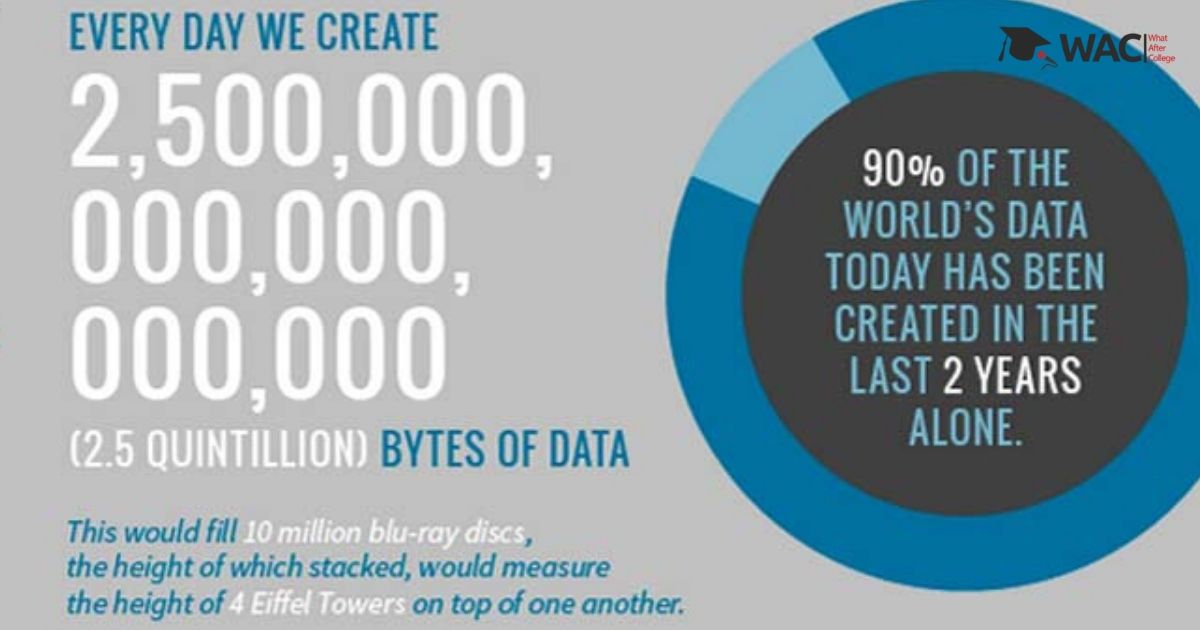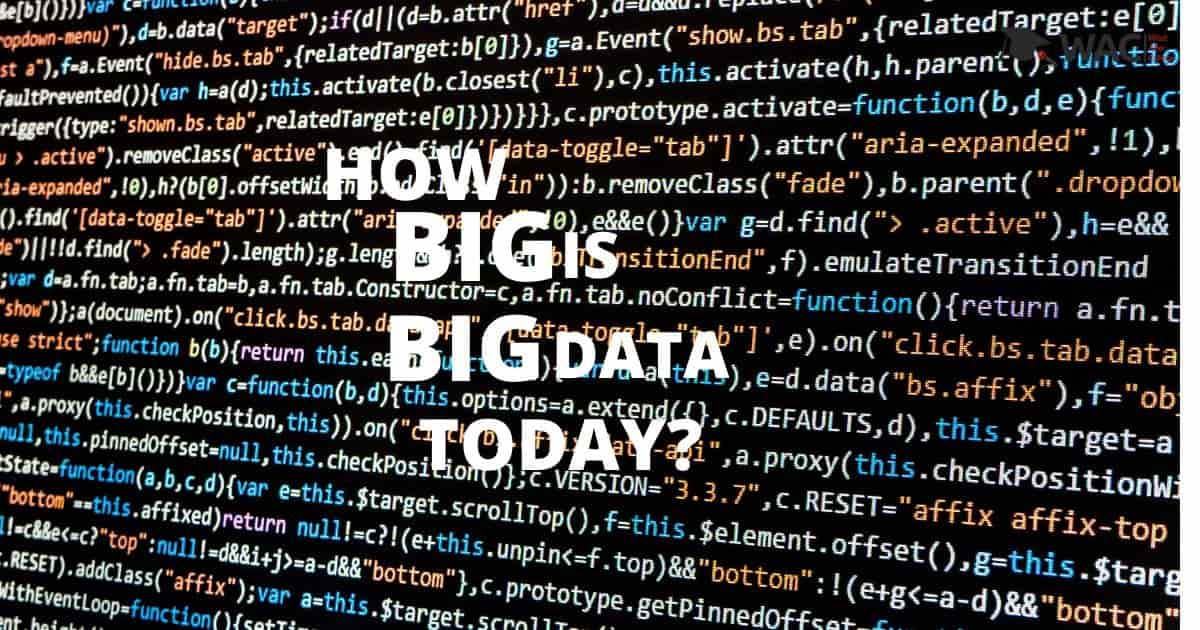Today, One of the favorite buzzwords in the IT industry is Big Data.
The term itself explains its immensity and makes us ponder how big is Big Data today.
First, let’s understand what actually is Big Data.
What Is Big Data?
Big Data is a popular term used to describe the massive collection of data, whether structured, unstructured, or raw. When you say “big data” it means that data of that size you can not manage, maintain, or process easily. “BIG DATA” seems like a constantly moving target as our companies/technologies are getting better and better, so it’s pretty obvious to get baffled about how big is big data today?
Data, Today is scaling massively and relentlessly. It tends to be hard to interpret a careful comprehension of what size the amount of data speaks to. The Terabytes (TB) and Petabytes (PB) have now become the common currency of the Data manager’s lives.
How much data can be termed as Big data?
There is a lot of misconception regarding how big is big data today or how huge it needs to be in order to classify as Big Data.
We usually define the term Big Data to refer to the data that is either in gigabytes or terabytes or petabytes or anything that is huge in size. This is not the correct definition of Big Data, even a small amount of data can be referred to as big data depending on what context it is being used.
Let’s take an example: If we try to send a 200MB attachment via email, we won’t be able to do so because that 200MB attachment is a “Big Data” with respect to email.
Stat Attack
The growth of data is exponential and this why is it difficult to set a unit on data. Here are some metrics, that help give us a hint of the numbers on the scale of Big Data.
Analysts anticipate that by 2020, there will be 5,200 gigabytes of data on each individual on the planet. On average, a large number of individuals generate around 500 million tweets each day. Instagram clients post 46,740 photographs in a moment. Walmarts forms one million clients’ phones exchange for every hour which is more than 2.5 petabytes.
On average, each person receives about 88 emails and sends 34 each day.
commercial airlines make about 5,800 flights per day.
How Big Data is classified?
It is classified mainly as:
1.Structured Data: It refers to the data, which is already stored in the database, in an ordered manner. It accounts for about 20% of the total existing data and is used in the programming and computer-related activities. For example data from sensors, weblog, etc.
2.Unstructured Data: While structured data resides in the traditional row-column databases, unstructured data is the opposite: they have no clear format in the storage. The rest of the data today created 80% of the total account for this classification. For example Satellite images, Scientific data, Social media content, website content, etc.
3. Semi-Structured Data: Data that isn’t in the customary database position as structured data, however, contains some organizational properties, which make it simpler to process. For example, NoSQL documents, since they contain keywords that can be used to process the document easily.
so, we can say that Big Data today, is in state of evolution, and no doubt it will continue to scale in volume and size.today’s large data will be tomorrow’s small data, but we know that these exabytes of big data open countless opportunities to capture insights that drive innovation.

All you need to know about Big Data
| Introduction to Big Data | Career Options after Big Data |
| 4 V’s of Big Data | Big Data for Business Growth |
| Uses of Big Data | Benefits of Big Data |
| Demerits of Big Data | Salary after Big Data Courses |
Learn Big Data
| Top 7 Big Data University/ Colleges in India | Top 7 Training Institutes of Big Data |
| Top 7 Online Big Data Programs | Top 7 Certification Courses of Big Data |
Learn Big Data with WAC
| Big Data Webinars | Big Data Workshops |
| Big Data Summer Training | Big Data One-on-One Training |
| Big Data Online Summer Training | Big Data Recorded Training |
Other Skills in Demand
| Artificial Intelligence | Data Science |
| Digital Marketing | Business Analytics |
| Big Data | Internet of Things |
| Python Programming | Robotics & Embedded System |
| Android App Development | Machine Learning |

